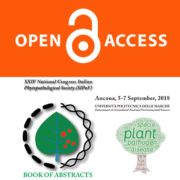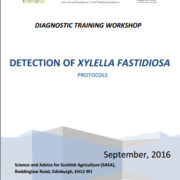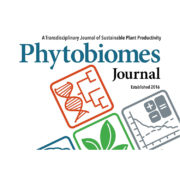Field experiments for the containment of the spread of Xylella fastidiosa in olive orchards
Authors
Dongiovanni C. (1); Di Carolo M. (1); Fumarola G. (1); Tauro D. (1); Ciniero A. (1); Altamura G. (2); Palmisano F. (1); Cavalieri V. (2)
Affiliations
(1) Centro di Ricerca, Sperimentazione e Formazione in Agricoltura “Basile Caramia”, Locorotondo, Bari, Italy
(2) Consiglio Nazionale delle Ricerche, Istituto per la Protezione Sostenibile delle Piante, Sede Secondaria di Bari, Bari, Italy
Abstract
The control of plant diseases caused by insect-vectored pathogens relies primarily on effective strategies for the reduction of the vector populations. The emergence of the insect-vectored bacterium Xylella fastidiosa in southern Italy, and more recently in different EU Countries, called for research on the characterization of the xylem-feeder populations and identification of candidate European vectors. Surveys identified the spittlebug Philaenus
spumarius as one of the most abundant species, in different countries and crops, as well as the predominant vector spreading the infections on olive trees in southern Italy. This finding called for the development of control strategies to reduce the population of this highly polyphagous and widespread insect species. Besides, supporting actions for the mechanical control of the ground vegetation to effectively reduce the juvenile populations, there was a need to develop tools for the control of the adults. From 2015 to 2017, several formulations based on different active substances (chemical and organic) with different mechanism of action were tested for the control of nymphs and adults of P. spumarius. Indeed, in the last two years, experiments were carried out, for evaluating the reduction of the bacterial transmission rates upon applications of kaolin on olive canopies. Applications of insecticides showed that among the synthetic products, neonicotinoids and pyrethroids yielded the highest mortality rates and persistence, both for the control of the juveniles and adults, whereas lower efficacy was recorded for the natural and inert compounds. Reduction of the transmission rates has been so far detected upon applications with kaolin.
This work was partially funded by the Apulian Regional Project “Tapass» Technological Clusters and by the EU Horizon 2020-funded Projects “POnTE (Pest organisms threatening Europe, grant agreement n. 635646) and XF-Actors (Xylella fastidiosa active containment through a multidisciplinary-oriented research strategy, grant agreement n. 727987).
Published on September 5, 2018 by PROCEEDINGS OF XXIV SIPaV CONGRESS, ANCONA 2018









